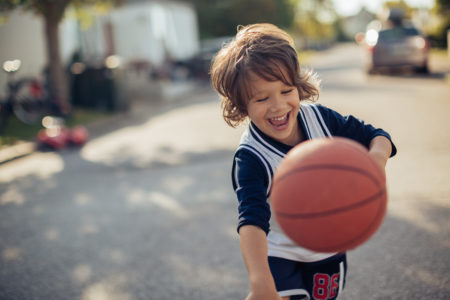With kids back in school, school and club sports are back in session and parents are meeting the challenges of supporting their young athletes.

As a parent, you’re investing time, money, and lots of energy in your child and their success at every level of competition. You find yourself playing the roles of motivator, encourager, cheerleader, and let’s not forget about chauffeur service!
With all of those responsibilities to juggle, what can you do to make certain your athlete is thriving in the gym and coaching environment? How do you set your athlete up to ensure their boundaries are respected and that they have bodily autonomy? By creating and reinforcing a culture that creates a safe, protective environment that places your child’s boundaries first.
Here are a few ideas to help you create and foster that environment:
Communicate, communicate, then communicate more:
- Be Proactive! Ask your coach to explain their expectations and style of coaching, not only for your athlete’s benefit, but for you as well. Be sure to ask about the child protection policies that are adhered to by your child’s sport teams. Having an open conversation with both the coaching staff and your athlete ensures that everyone is on the same page and are prepared to hold one another accountable.
- Empower Your Athlete. Be empowered to be a parent or guardian who supports and protects their athlete and other athletes around boundary issues. Encourage your athlete to be an “up stander,” or someone who stands up for and with others when the boundaries are blurred. Encourage your athlete to pay attention when they get that feeling in their gut that something isn’t quite right, and that it’s okay to let you know when they feel that way.
- Be Straight Forward. Understand the way you communicate, both verbal and nonverbal. Be straight forward and respectful, working from a place of mutual respect and understanding when dealing with coaches, other parents, and athletes themselves.
Up your awareness game:
- Be Aware of your Coach’s Style. This is especially important if you are new to the team or if your athlete has moved up to a different level of competition or has new coaches. Be aware of how the coach makes physical corrections and contact, and be prepared to speak up if you notice anything concerning.
- Be Aware of the Policies of the Team. How are things like travel, overnights, changing areas, and communication between coaches, athletes, parents and guardians handled? Do coaches communicate directly to the athletes? Are there policies in place the help to minimize one-on-one time between coaches and athletes, or athletes themselves? Where do you find the team’s policies and procedures for these types of interactions and events?
- Be Aware of the Team’s Culture. Does the team create an atmosphere that encourages an athlete to communicate concerns without fear of repercussions? While sport-specific coaching techniques may not be up for discussion, questions about personal boundaries should always be allowed and encouraged. Remember, your goal should be to have a protective boundary that puts personal safety first.
Taking active parental involvement to a higher level:
- Assume the Best, but be Prepared to Solve Problems. Be the parent or guardian who encourages, who is willing to provide support and a listening ear to those with concerns. Know the policies. Always look to be a part of the solution to challenges.
- Know the Practice Schedule. Stick around for a while at the beginning of practice, or arrive early to observe the end of practice. Put your phone down and pay attention. When you engage fully you’re open to receiving cues from your athlete that you might not have noticed.
- Have a Plan to Speak Up. Be ready to address your concerns with coaches and team management. Know the policies and don’t be afraid to insist that they are followed.
Putting any of the above into practice takes a willingness to make changes, to be informed and aware, and to respond to concerns. When you are a part of creating a safe, protective environment for your athlete, you create a place where they can grow and excel. You are also modeling for young people what it looks like to communicate with clear, positive intentions and to be respectful of one another while keeping good boundaries intact. And who knows, they might just make it to the Olympics, too.
Need Help Talking to Your Child About Body Safety?
Talking with Children about Safety from Sexual Abuse is a 30-minute training where parents learn how to have age-appropriate, open conversations about our bodies, sex, and boundaries. Find out more.
Follow us on social media to stay up to date and join the conversation.



Thank you.